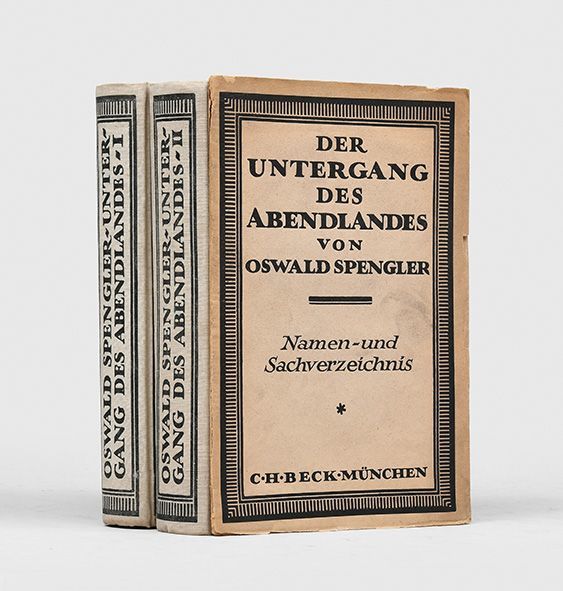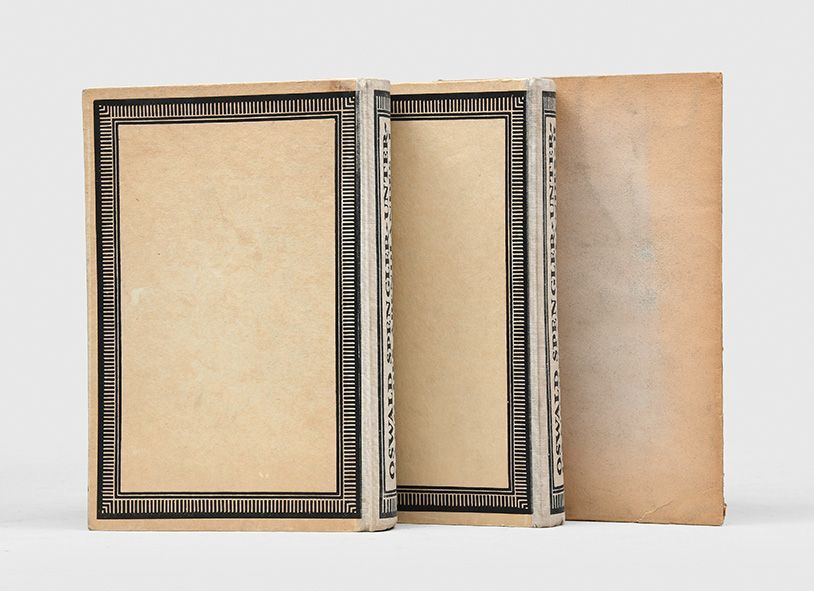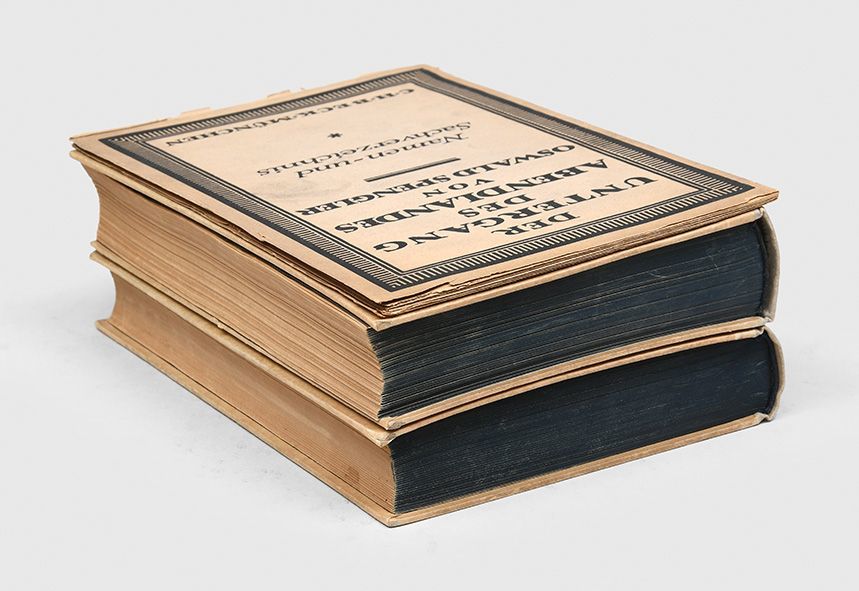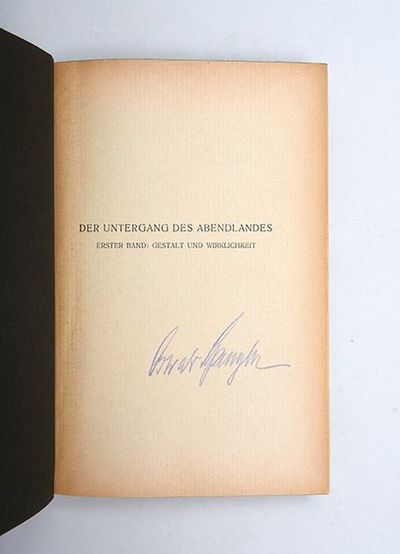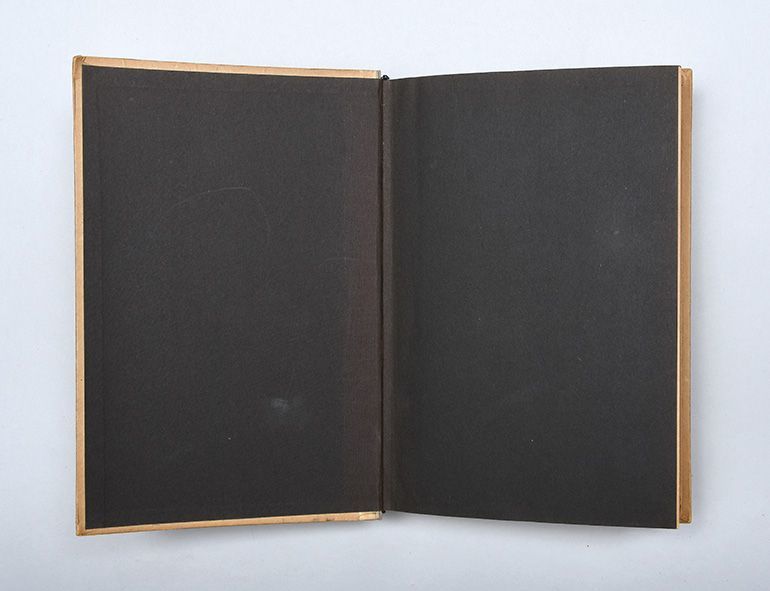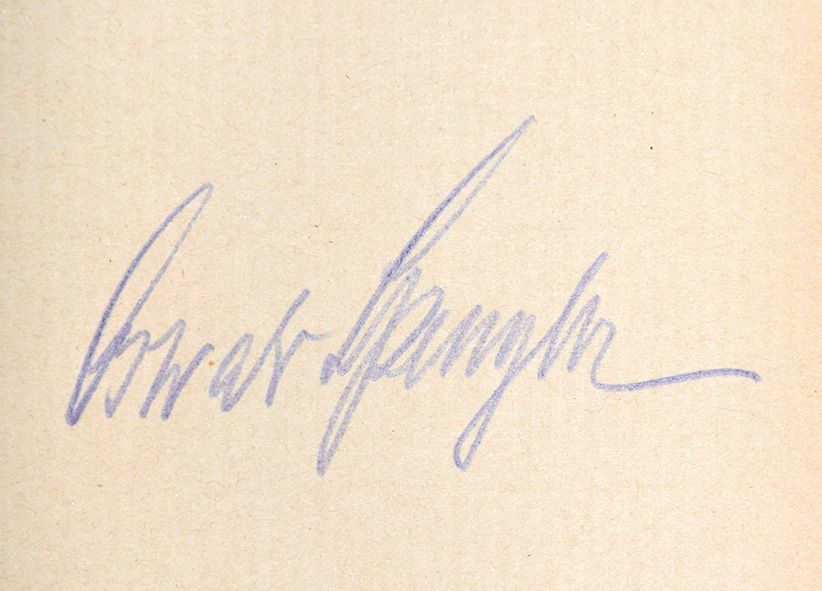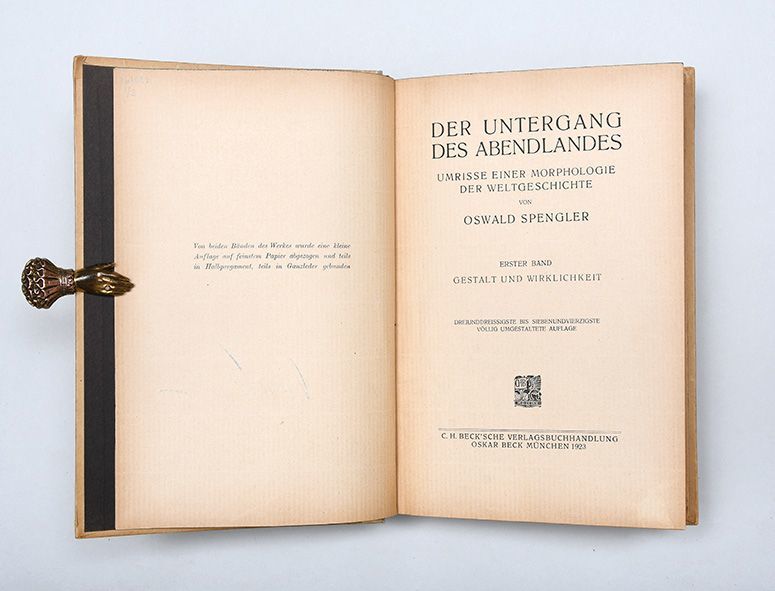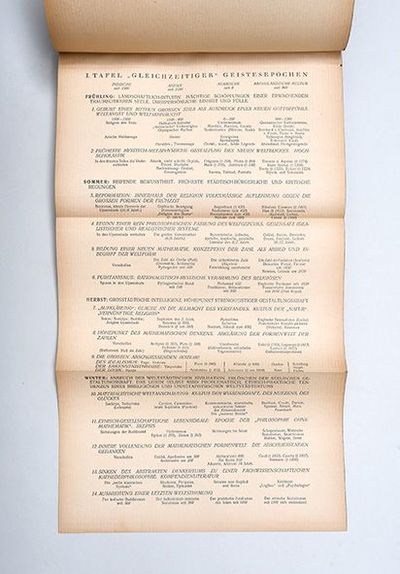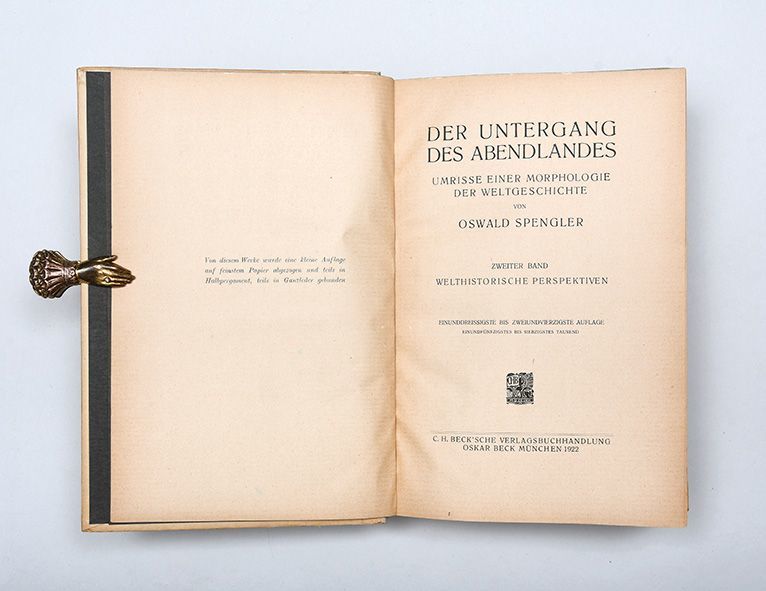Münich: C. H. Beck'sche Verlagsbuchhandlung Oskar Beck,, 1923, 1922, & 1923. Signed by the author A complete set of Spengler's magnum opus, signed by the author in purple pencil on the half-title of volume one; a mixed edition, comprising later revised editions of volumes one and two and a first edition of the separately issued index volume. The Decline of the West is a comparative study of the fall of history's great cultures in which Spengler predicted the collapse of Western civilisation. Despite many rejections, the then-obscure historian Oswald Spengler (1880-1936) eventually succeeded in finding a publisher for Der Untergang des Abendlandes. The Viennese publishing house Wilhelm Braumüller issued the first volume in January 1918 but, anticipating poor sales, printed just 1,500 copies. After its immense popular success and a second edition, Spengler switched to the Münich-based publisher C. H. Beck for the publication of all his later works, including the second (1922) and index volumes (1923). Spengler "contended that all civilisations, like every living organism, pass through a predetermined 'life cycle' of prime, maturity and decay, and that this trend can be neither halted nor reversed. Spengler distinguished eight civilisations which, independent of one another, have run this course: Egyptian, Babylonian, Indian, Chinese, Greco-Roman, Arabic, Mexican and Western. The outlook for western civilisation, to Spengler, is gloomy. The end is at hand. Democracy, the typical product of western civilisation, will be wiped out by caesarean autocracy. The tremendous success of the book among the semi-literate, especially in Germany and America, during the period after the First World War, is a politico-sociological phenomenon that has nothing to do with the intrinsic merits or demerits of this 'new outlook on history and the philosophy of destiny', as the author himself described the aim of his book... Every responsible historian repudiated Spengler's theory; but it offered a plausible pseudo-scientific basis to the innate propensity of the German for ascribing to an inexorable fate what they refused to acknowledge as their own shortcoming and failures; and it confirmed the Americans in their complacent belief that 'the West' (which they equated with the Old World) was in fact 'finished'" (PMM). The title of the English translation - The Twilight of the West (1922) - lacked the same portentous impact: it "entirely fails to convey Spengler's deliberately emotional implications of a Wagnerian twilight of the gods and the crack of impeding doom" (PMM). In this set, the first volume has the "33rd through 47th revised edition" issue statement on the title page and the second volume has the "31st through 42nd edition, 51st through 70th thousand" statement. In addition to the cloth-backed boards seen here, these volumes are sometimes encountered in buff printed wrappers (printed to the same design) or with dust jackets. The index volume is also sometimes seen in boards and a dust jacket (again, to the same design). Together 3 vols, large octavo. 3 folding tables in vol. 1, 10 pp. and 12 pp. publisher's advertisements in vols 1 and 2 respectively. Der Untergang des Abendlandes: 2 vols, both original cream cloth-backed buff paper-covered boards, spines and covers lettered in black within geometric borders, black endpapers and top edges. Namen- und Sachverzeichnis: original buff printed wrappers, with matching lettering and borders, unopened. Der Untergang: spines darkened, small patch of wear on front board of vol. 1, heavy book blocks resulting in slight pull downwards and cracks leaving gauze visible before last leaves in both vols, contents clean and evenly browned, a few internal tears and creases (in vol. 1: leaves 33.2-4 creased at lower corner, in vol. 2: leaf 1.6 torn at lower edge, leaf 28.1 with nick at outer edge and tear in centre. Namen- und Sachverzeichnis: wrappers browned and a little soiled, starting in a few places at spine, some small chips and tears at extremities, contents similarly clean and browned. Overall a very good set, presenting uniformly in the original bindings, and markedly well-preserved given the fragility of the paper stock. Printing and the Mind of Man 410.




